Adsactly Education - Basics For Understanding Money
Adsactly Education - Basics For Understanding Money
When talking with people invested and involved in cryptocurrencies, there is a vast majority who are aware of the mechanics behind money. So I apologize to all those who are not new to this topic. Still it is important to provide information to those who are completely new to this whole “thing”.
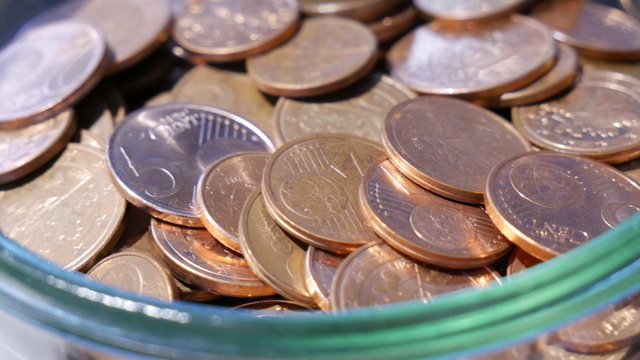
a glass filled with "indians", the red/small european money before it was seen as racist to call them that
A Short History of Ancient Money
The first clear and scientifically proven uses of money were simple swapping of goods. This is called natural or commodity money. Exchanges of salt, tea, furs, conch shells etc. Pretty quickly it was obvious that smaller objects were preferable to big ones because of storage and transport issues. Also there was a huge difference in prices depending on what was available where. So as example salt was worth near nothing, where it was possible to mine it, while where salt was scarce, it was enormously precious. Most people thought only regionally and were not aware of anything that was away more than a day’s march.
It almost took 5300 years until pieces and bars of metal became a common storage for value. Around 700 BC in ancient Greece and China was when the first “real” coins emerged. It took another 800 years until it was finally common practice to use coined metal. The oldest known coin economy can be found in Asia. A nation called the Lydians used the “Trite” as a currency around 800 BC, but it is unclear, if the Greeks or Chinese have been inspired by them.
In 100 AD the right for coinage was firmly in the hands of government. Copper and brass coins were produced by the Roman senate, while gold and silver coinage rights where only given to the roman emperor.
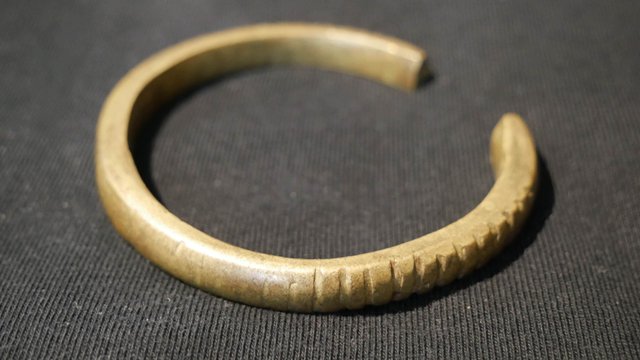
so called "slave money" or "Manilla" probably from Nigeria around 1500. A human was "worth" 15 of these
This went well for another 700 years and ended with the attempt to “globalize” the currency. The “dinar” only lasted about 100 years until it failed. (Compare to the € ). Again depending on the regions the value of “money” was astonishingly different. For the next 100 years until 900 AD everyone with some influence coined their own currency. This can probably be compared to ICOs of the moment.
In the 10th century, the Chinese came up with a disruptive invention. A piece of paper marked with the value of a deposit. Fun fact: Up until then, the Chinese had still used iron, so that their coins were significantly heavier than anywhere else. Here we find the first “banks” as we know them. And we find the first paper money. Any value on paper had to be backed up by a real value somewhere in a storage room, always available for grabs.
It took Europe another 500 years to understand and apply this concept. Another fun fact: The Europeans didn’t like the system much, as the value of silver changed a lot, while the value on the paper stayed the same. This retention reached its peak during the French revolution, when people didn’t believe in the paper anymore and tried to change everything they owned in “real” money, thus silver or gold coins. The scarcity of silver then made its value rise, such as the imprinted value was a lot less than the actual value. People started to melt down their coins.
In 1867 the international monetary standard is switched from silver to gold, as there is not enough silver anymore to meet the needs of the world population.
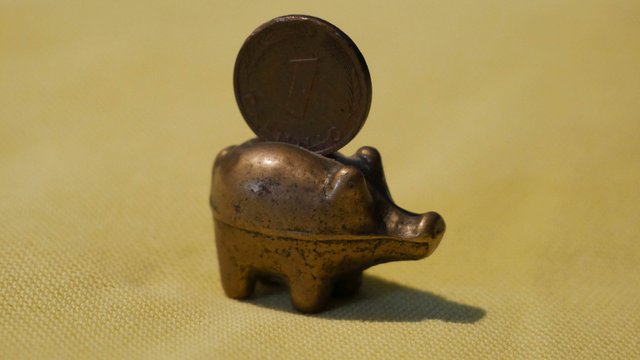
"Glückspfennig" the smallest coin in pre EURO time, said to bring good luck
Short Historical Overview of Actual Money
It was in Germany in the year 1876, when the “Reichsbank” issued the first “real” (in fact “standardized”) cashless payment. Even if already in ancient Egypt banks existed that knew how to transfer deposits by simply writing them from one account to another. It is really funny that it needed a so called legal frame and 2500 years until history considered a cashless payment as “real”.
The first real credit card was introduced in 1950 by Diners Club, after some hotels had given a type of credit card to well known and rich customers already in 1894.
Fun Fact: the first mention of the term “credit card” is proven to be in the Science Fiction Novel “Looking Backward”, written by Edward Bellamy.
Between the beginning of WW1 in 1914 and 1944 the gold standard was disrupted and finally dismissed and replaced by the Bretton-Woods system. This system pegged almost all currencies of the world to the dollar, while linking the dollar to gold (Gold-Standard). During the war in Vietnam, President Nixon cut this link on the 15th August 1971 and Bretton Woods finally failed in 1973. These events are so important and complex that it would need several very long articles to only scratch the surface of the matter. I strongly suggest digging very deeply into this, to really understand what is going on since then.
The next important date to remember when speaking of money is “online banking”, which was introduced in 1995.
From then on the development seemed to have happened in a time lapse. In 1996 the cash card went public and in 2002 the EURO was started and in 2008/2009 Bitcoin was made public. Since then, most people will know the history.
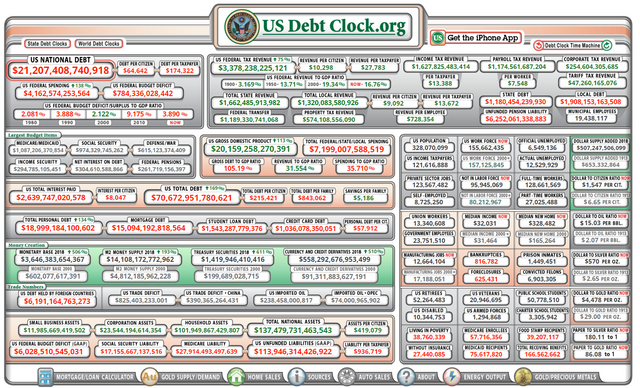
Screenshot from this site
How Money is Made
Today most money in existence (about 90%) is so called “Fiat Money”. If you google it, you will find a lot of information about it. In short, fiat money is money without intrinsic value or a guarantee that it can be converted into a valuable commodity. To make it understandable I will tell you a little story:
Bob and John are neighbors. Bob likes gardening and John likes painting wallpapers. John also owns a garden but hates mowing his lawn, while Bob just made some renovations in his house and really needs someone to paint his wallpapers because he needs to take care of his garden. Bob asks John if he could do the job and promises to mow his lawn, when he needs it. John agrees, but asks for a note stating this. Bob writes on a small piece of paper: "This paper is worth two hours of lawn mowing", and signs it with his signature. They just created “money”…
The days go by and John’s wife did not know about the agreement. She is a strong lady and so one day she picks up the lawnmower and does all the needed work. In fact, she likes this work so much, that she decides to do it all the time, John doesn’t need his lawn-mowing-money anymore. So he decides to give it away to another neighbor, who finally gets to Bob and gives him the piece of paper. Bob has no problem with that and does his obligations. As he has no need for the paper anymore, he destroys it.
With this little story we can see and analyze a lot of problems concerning money.
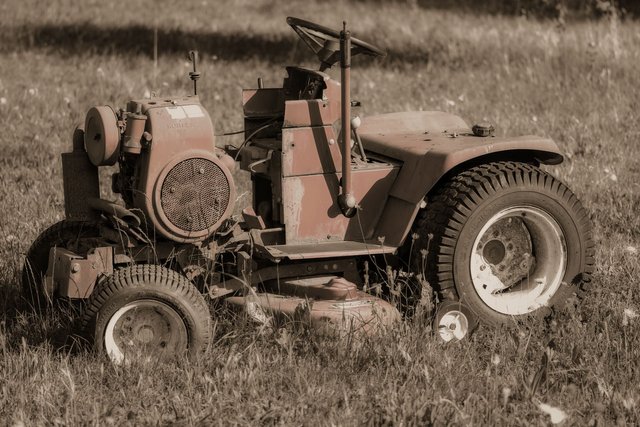
CC0 picture from Pixabay
- If Bob decides to keep the paper and comes to an aged John who can barely move anymore… the paper would be almost worthless.
- If Bob gave the paper to someone living quite a distance away, the paper would be near worthless.
- If John decides to keep the paper, it would be worthless because it is of no use.
- If John decides to print and sign so many of these papers that he can’t even keep up with the work requested from him, the papers would be worthless. The more he prints, the less value has one of the papers.
Number one illustrates interest rates. In my opinion, there is nothing bad about them. Interest should be seen as benefit for delayed gratification. This is probably the most important concept to teach children. Brush your teeth NOW or you will have problems with your dentist LATER. Don’t spend all of your pocket money NOW or you’d have problems paying for your driving license LATER. Only spend what you have NOW, orelse you will be in debt LATER. Government and regulations do exactly the opposite with negative interest rates. The FED and the IMF “teach” us to spend everything we have and more, because it will be worth much less in future.
Number two is a problem solved by the internet, the speed of transfers and travelling especially by cryptocurrencies as EOS, Bitshares and STEEM. This problem was the main reason for the failure of historical attempts. We now have a worldwide working, while diversified (and decentralized), system ready to launch (or already running if scalability can be guaranteed).
Number three should not be a problem anymore since we have moved away from commodity money. Still the fiat banks do exactly this. They print papers, they give it away, and when it comes back, it is not destroyed, but kept in the system. This way there is a constant devaluation of the currency having the same effect as problem 4.
Number four is in my honest opinion the main problem we face today. You can see the results of the four problems combined in this video. (And I strongly recommend watching it)
And these are only the liabilities of the US, increasing by more than 5 000 $ per second.
Solution
I really have no real clue. I hope that the possibilities of cryptocurrencies, free markets, insane speed of accessing knowledge and decentralization will help a lot.
The only thing that I am sure about is that we can’t go on like we do at the moment. History has shown that the government being involved in everything finally corrupted good ideas provided by the market. Perhaps open societies as such as @adsactly , working together worldwide without boundaries and restrictions, working on projects, sharing knowledge and abilities based on trust and cryptocurrencies can be a real solution.
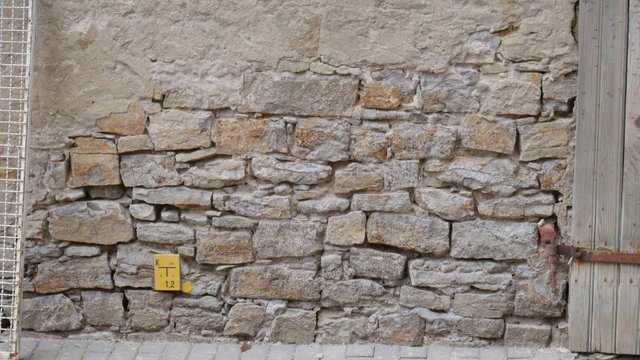
Ruined wall of an old house. Only with effort and dedication it can be saved...
TL & DR
Money's a matter of functions four,
A Medium, a Measure, a Standard, a Store.
This is a quite well known couplet, you’ll find in many macroeconomic books all over the world. I don’t read anything in these two true lines about involvement of government…
THX for reading
@pollux.one
all pics without source are made by myself with Lumix G70/12-60mm
Click on the coin to join our Discord Chat
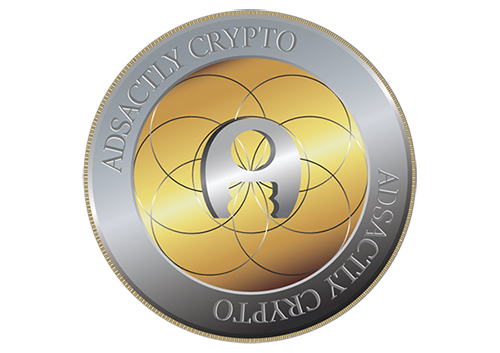
Witness proposal is here:
Go To Steem Witness Page
In the bottom of the page type: adsactly-witness and press vote.

Use small letters and no "@" sign. Or, click here to vote directly!
Thank you!
I like this article it contents great informations about money
GREAT POST
This post is enlightenning and educating, giving knowledge to its readers. Talking about money we feel happy when we really have it. and of course will be sad when we get into debt, or its value is low. We will feel as if there is no point in holding money if it is low in value.
The money we now hold in either fiat or crypto forms is a metamorphose form of money from time to time.
As we know in the prehistoric life of man has begun to know barter, namely the exchange of goods with goods. This happens when humans are no longer nomadic and already know farming. Because the needs are increasing and can not be self-sufficient then the community trying to find people who have the goods as needed. If there is a matching agreement there will be a barter transaction.
on barter transaction there are weakness that is
Due to this difficulty, the people are looking for goods that can be agreed as "money stuff" . For that, it is agreed that the goods used as money must have a high value, have magical value or are goods used in everyday life. goods that are made this money standard can be pearls and salt. In fact, in the historical record of salt in Rome became a medium of exchange and also used to pay wages. That's why until now wages are known as salary that comes from the word salarium, which means salt.
in the usage of this goods money there are also shortcomings such as storage difficulty, transporting up to the value can not be the same until the smallest fraction. eventually people use coins, both silver and gold. Gold and silver are metals whose value is relatively stable. In its development came the banknotes whose printing had to go through gold collateral. Paper money is known as fiduciary money, because people believe that printed paper has a value and can be used as a legitimate means of exchange.
The value of banknotes that rely heavily on the amount of money printed makes the occurrence of fluctuations. If the money in circulation is too much it will certainly lead to inflation. for that reason society starts to find a money system that is not related to the government of a country, not limited by time and region based blockchain and decentralized, that is crypto money and of course STEEM include in line of crypto as you described in your post. while we hope Steem get normal value again, let's make it come true.
Thanks @pollux.one
Accept @adsactly
thank you steemit
Warm regard from Indonesia
Thx for your long response. The main thing people have to understand is that it is a VERY different thing to be forced by law to use a certain "money" or to use something that emerged "naturally". Also it is important to understand the risks that come with money that has no intrinsic value. It is said by some, that cryptos do not have intrinsic value neither, which is imho not true. BTC has energy and system power "in it", Steem has content and a community "in it".
You are right. And we know that crypto will hold important role. However not every goverment has good policy to cryptocurrency. We can guess that they don't believe at all about crypto. Anf now the big chalange is how to force govermen so they will suport crypto development.
Cryptocurrency could bring a large percentage of poor people into the 21st century by allowing them to participate in the global economy.
Thanks to cryptocurrencies, hundreds of millions of people could be able to save money, earn interest, invest, start businesses, borrow money or send money to friends and family for the first time. The effect of this will be huge. This could lead to millions of new businesses and a vast amount of wealth created through cryptocurrency and blockchain.
This is true. Cryptos can become the most disruptive innovation the world has ever seen.
It’s amazing how everything progressed. At the same time it’s very easy to imagine how it worked at that time. Even though in some places things were much cheaper than in others, it must had been a great opportunity for business. It all made a difference if people took advantage of this opportunity. Just like we are taking advantage of today’s opportunities and I’m talking specifically about cryptocurency. Even though those early birds made the best deals, I’m pretty much convinced it’s still not too late. Especially in today’s discounted prices.
It’s also surprising that it was Chinese who invented paper money first and even more surprising that it took Europeans another 500 years to understand and apply this concept.
I wonder what most people thought about this concept. 🤔 I think I know. They thought about it exactly the same way most people think about cryptocurency today. Which means not too optimistically. I guess they need some time to adopt. I just hope it won’t take 500 years lol.
BTW: with cryptocurency I also belive in precious metals.
THX for your reply. I was also astonished about some things I didn't know about money while researching this article.
Money is a mode of exchange that started way back in the time of Caesar of Rome. If my memory is right, Caesar was the first who made copper money as a replacement of barter trade of goods in ancient time. And right now, the most advanced of exchange was I think is crypto but this is not yet generally accepted - maybe sooooon... :)
Hi, thx for your reply. Your memory is not really right. Caesar was only the first one, to put his own face on a coin. As explained in the article the first "coins" go back much more. (Lydians in Asia about 600 years before Caesar)
To listen to the audio version of this article click on the play image.

Brought to you by @tts. If you find it useful please consider upvoting this reply.
Thank you for this service. It is quite useful!
I like this
Great!
Cryptocarcanee trading is generally trading in cryptococcus auction. Here you can also sell Bitcoin, Lightkayon and Sell as Forex. Apart from mining, crypto trading allows you to get involved in the world of cryptococcernes... Crypto great project...congratulations @adsactly Sir...
I have really no clue what you are talking about.
Hiii @adsactly ...... Nice blog or aane wala samye... Aap ka blog
thx a lot! even if I can't understand what you say!
Sir @adsactly this post is really educational.Your article Incredible.
Glad if it was helpful. THX!